Cucumbers are a delicious and easy vegetable to grow in the garden I'll show you how.
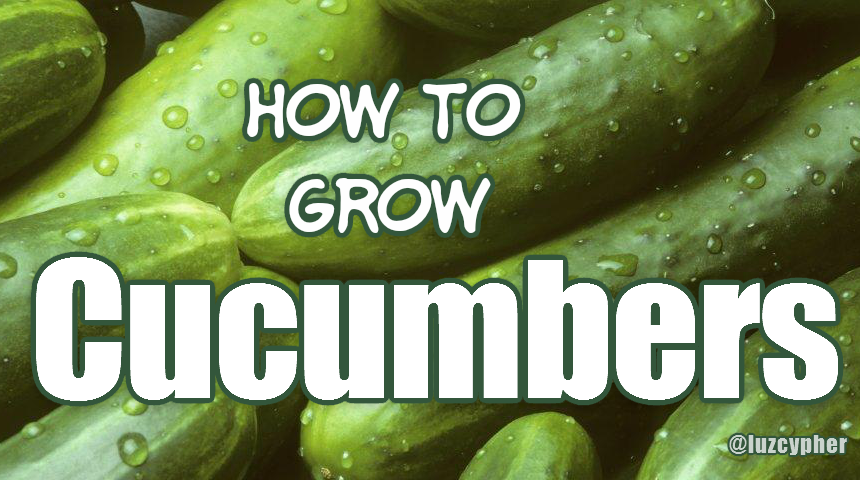
Cucumbers are Cucurbits this family contains watermelon, squash, melons, gourds and pumpkins.
Cucumbers tolerate a broad range of soils but their favorite soil is loose well drained and with a slightly acidic pH between 6 and 7.
Before planting the cucumbers, I worked some compost into the soil. This will help provide drainage and organic matter.
Cucumbers sprawl so they take up a lot of space. My cucumbers sprawl right out over the raised bed. If you don't have tall raised beds you can trellis your cucumbers vertically so that they take up less space and keep the fruit off the ground.

Vertical trellising also encourages nice straight growth for slicers and increased light to the plants and air circulation helps prevent some fungal diseases.
I direct seeded these plants after the danger of frost was passed and when the soil heated up to about fifty degrees.
Plant the seeds a half an inch deep plant two to three seeds every foot if you're trellising, if you're not, plant four to five seeds in a hill spaced four to five feet apart.
I'm planting Sumter cucumbers which are disease resistant to powdery mildew and other mildews and other diseases, You should be sure and plant disease-resistant varieties for diseases that are prevalent in your area.
After your seeds have sprouted you wanna thin them to about one plant every foot for the trellis method and for the hill method three plants per hill.
Cucumbers can also be started indoors about three to four weeks before the last frost. Cucurbits like cucumbers don't like their roots disturbed.
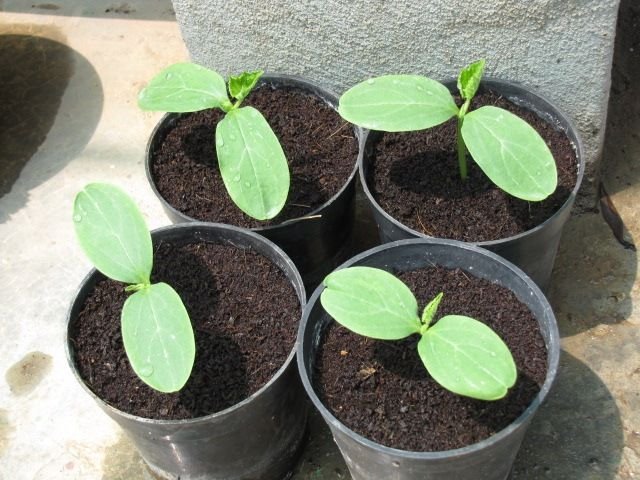
You can start them in trays as long as you have big cells, however, they prefer to be started in pots that can be planted directly in the ground like the cow pots, the coco pots or the soil blockers.
When your cucumbers start vining and you see the tendrils coming off the stems, that's time to side dress with a little bit of all-purpose fertilizer.
You can mulch them as well to help conserve water. Cucumbers are shallow rooted plants so it's important to keep them well watered.
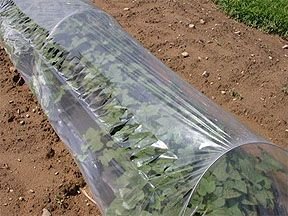
One of the most serious pests for cucumbers and other Cucurbits is the cucumber beetles, not only do they eat the plants but they can spread diseases like mosaic virus and bacterial wilt. You can cover your cucumbers with a floating row cover which will help protect them from cucumber beetles.
Make sure to remove the row cover when the plants start to flower so that the pollinators can get in and do their thing.
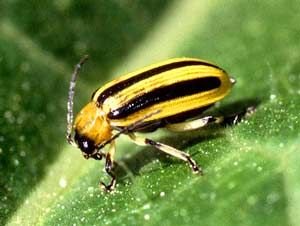
You can trap out or monitor the cucumber beetles with these adhesive traps this trap is attractive to four different species of cucumber beetle. If you find the insects stuck to the trap, come out at night and dig around the stem of the plants to make sure that you don't have any larva. If you do make sure and destroy them.

Cucumbers need to be pollinated. They set male flowers which are these skinny ones and female flowers where the immature cucumber is visible. If cucumbers don't get proper pollination they can grow misshapen. Make sure you plant flowers in your garden to attract bees and other pollinators.
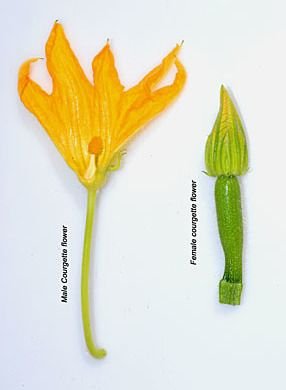
Harvest your cucumbers in the morning when the turgor pressure is at its highest. Turgor pressure is like blood pressure for vegetables. It's what makes them crisp instead of limp you can pick them from two inches long up to when they start to turn yellow.
Slicers are usually harvested when they're one to one-and-a-half inches in diameter. Cut the stem about a quarter of an inch or so above the cucumber. The more cucumbers you pick the more you get so try to come out and harvest every other day.
Making Pickles
One of my favorite things about cucumbers is you can make pickles with them and keep them for a long time. Making pickles is easy and it starts with the variety you grow.
Dill pickles are one of the most popular types of pickles across the world. Dill pickles are made by adding dill weed and seed to the brine that ferments the pickles. In commercial dill pickle production manufacturers use dill oil rather than the fresh herb. Dill pickles come in different varieties including German and Polish dills, kosher dills, and genuine dills.
German dill pickles are non-fermented (made without a brine) and are only packed in vinegar or lemon juice. Polish dills are fermented with added garlic. Kosher dills are not always truly kosher, but they are a fermented dill that has had copious amounts of garlic added during the last stage of fermentation. Part of the process to make a food product kosher is that it must first be inspected by a Rabbi.
So called genuine dill pickles are made using the more old-fashioned method of lactic fermentation. Dill is only added during the last stage of fermentation in the crock or in the jars. These pickles are very strong with a sour flavor.
Bread and butter pickles are a type of sweet pickle that is usually cut in slices and pickled along with onions. Bread and butter pickles are often used on hamburgers and sandwiches. Slippery Jacks are made with a similar brine but from cucumbers which have become overgrown, often they are packed as spears with the seeds removed.
While many pickles are referred to as gherkins, a gherkin is actually a specific variety of cucumber used for pickling. Gherkins are made from the West Indian, or burr, cucumber. A similar pickle is the French cornichon pickle which is pickled in wine vinegar and garlic when the cucumbers reach about 2 inches long.
Half-sour pickles are made in a brine that has no vinegar, just salt and water. The pickles are processed under refrigeration, and because the brine contains only salt water they remain crisp and keep a bright green color.
Sweet pickles are fermented with sugar added to the brine. Candied pickles are a type of sweet pickle that is packed in a heavy syrup brine to produce an extremely sweet pickle.
Kool-Aid pickles are popular in the southern U.S. To make these pickles a batch of double strength red liquid Kool-Aid and a pound of sugar is added to pickles that have already been processed. After a week in the refrigerator the pickles are bright red in color and have a sweet and sour flavor.
Tsukemono pickles are a type of Japanese pickle that includes mixture of vegetables including cabbage, cucumbers, daikon, and plums that are pickled in a soy brine.
Pickle relishes are even more varied than pickles themselves. Relish can be made with sweet, sour, or chopped dill pickles, but many times peppers, corn, onions, fruit, tomatillos, or green tomatoes are added. credit
Choosing varieties for pickling:
Pass over long, thin-skinned varieties, like English hothouse cucumbers. I like to use medium-to-small-sized Kirby cukes. The Kirby variety has a thicker skin that can stand up to the pickling liquid, and remains crunchy, with a good snap, long after it's been preserved.
Cucumbers that are too young and thin-skinned won't stand up to the pickling process. Too old, and they'll have tough, fibrous skin and large, bitter seeds.
How can you tell a cucumber's age? Size is an indicator (again, go for medium), and also, taste. If it's sweet, with a good crunch when you bite into it, it's a keeper.
Always get your pickling cucumbers from a farmers' market or grow your own. The large conventionally-grown types can have a waxed coating. And always wash your cucumbers well before using—no matter where you got them.
Pickles are very easy to make and taste delicious, plus you can adjust the amount of pickling time very easily to your preferred taste by just refrigerating the pickles to stop the fermentation process.
We try our best to save some for the winter but they're so good it's hard not to eat them all before winter comes.
Here's a simple recipe for making dill pickles.
Ingredients:
- 3 1/2 cups water
- 1 1/4 cups white vinegar
- 1 tablespoon sugar
- 1 tablespoon sea salt
- 4 cups cucumber spears
- 2 cloves garlic
- whole 2 heads fresh dill
Stir water, vinegar, sugar, and sea salt together in a saucepan over high heat.
Bring to a boil; remove from heat and cool completely.
Combine cucumber spears, garlic cloves, and fresh dill in a large glass or plastic container.
Pour cooled vinegar mixture over cucumber mixture. Seal container with lid and refrigerate for at least 3 days.
Health Benefits Of Cucumbers
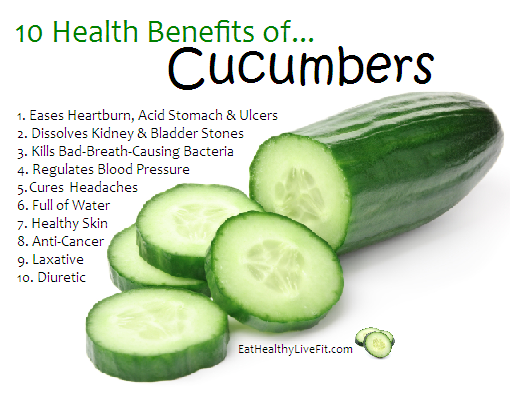
Here is a short list of the impressive health benefits that a cucumber carries:
- Keeps you hydrated. If you are too busy to drink enough water, munch on the cool cucumber, which is 96 percent water. It will cheerfully compensate!
- Fights heat, both inside and out. Eat cucumber, and your body gets relief from heartburn. Apply cucumber on your skin, and you get relief from sunburn and itchy skin.
- Flushes out toxins. All that water in cucumber acts as a virtual broom, sweeping waste products out of your system.
- With regular use, cucumber is known to dissolve kidney stones.
- Nourishes you with vitamins. A B and C, which boost immunity, give you energy and keep you radiant. Give it more power by juicing cucumber with carrot and spinach.
- Supplies skin-friendly minerals: magnesium, potassium, silicon. That’s why cucumber-based treatments are popular in spas.
- Aids in weight loss. Enjoy cucumbers in your salads and soups. My favorite snack? Crunchy cucumber sticks with creamy yogurt dip.
- Revives the eyes. Placing chilled slices of cucumber on the eyes is a clichéd beauty visual, but it really helps reduce under-eye bags and puffiness.
- Cuts cancer risk. Cut down your risk of several cancers by including cucumber in your diet. Several studies show its cancer-fighting potential.
- Stabilizes blood pressure. Patients that struggle with blood pressure, both high and low, often find that eating cucumber brings relief.
- Refreshes the mouth. Cucumber juice refreshes and heals diseased gums, leaving your mouth smelling good.
- Smooths hair and nails. Silica, the wonder mineral in cucumber makes your hair and nails stronger and shinier.
Soothes muscle and joint pain. All those vitamins and minerals in cucumber make it a powerful enemy of muscle and joint pain. - Keeps kidneys in shape. Cucumber lowers uric acid levels in your system, keeping the kidneys happy.
- Good for diabetics. Patients of diabetes can enjoy cucumber while also reaping its health benefits: cucumber contains a hormone needed by the cells of the pancreas for producing insulin.
- Reduces cholesterol. A compound called sterols in cucumber helps reduce bad cholesterol. credit
Cucumbers can be bitter but that's more based on what kinda variety you're growing rather than any cultural practices and peeling them can remove the bitterness so grow your cucumbers and grow organic for life!
Related Posts
How To Grow Onions, Leeks And Shallots --- by @luzcypher
How To Grow Beets --- by @luzcypher
How To Grow Strawberries --- by @luzcypher
How To Grow Lettuce For Your Home And Market --- by @luzcypher
How To Plant And Care For Artichokes In Your Garden --- by @luzcypher
How To Plant Potatoes For A Year Round Harvest --- by @luzcypher
The Magic Of Homemade Fertilizer Feeding Your Garden With Comfrey --- by @luzcypher
Benefits Of Garlic And How To Grow It In Your Garden --- by @luzcypher

